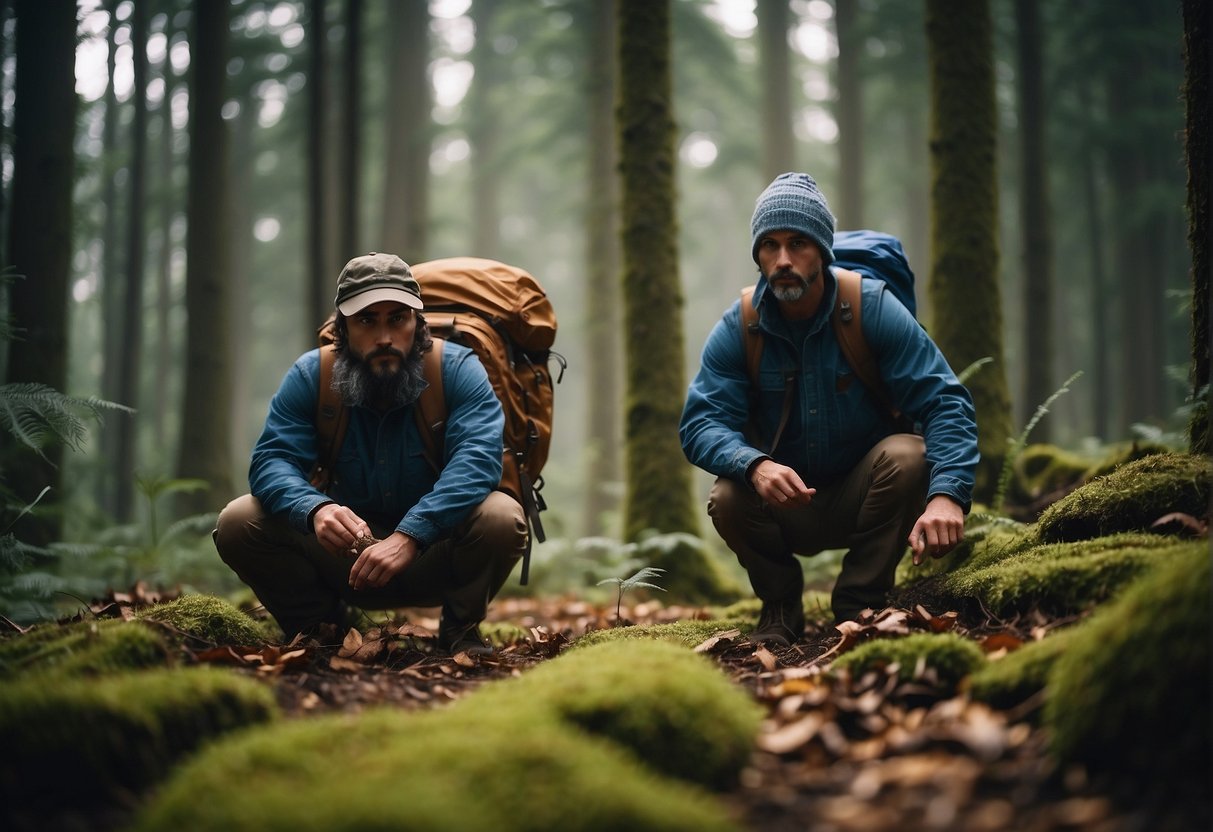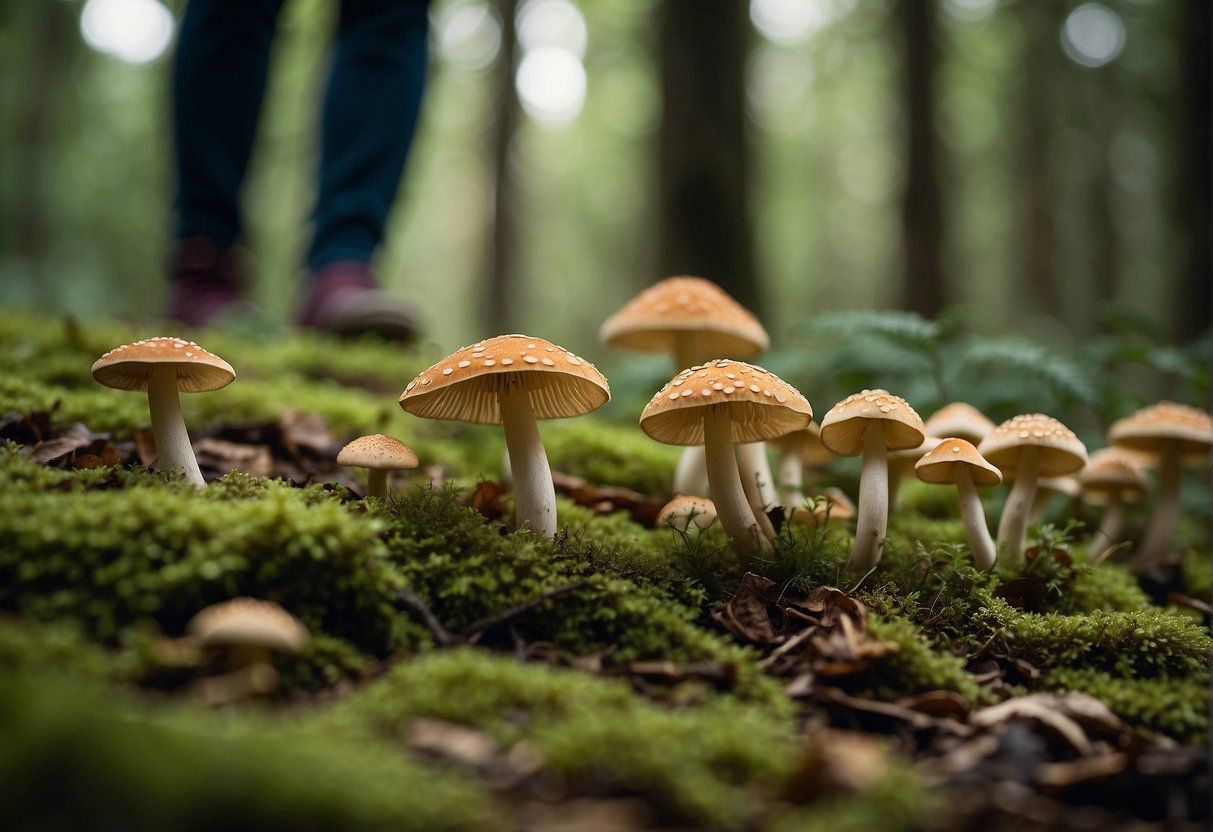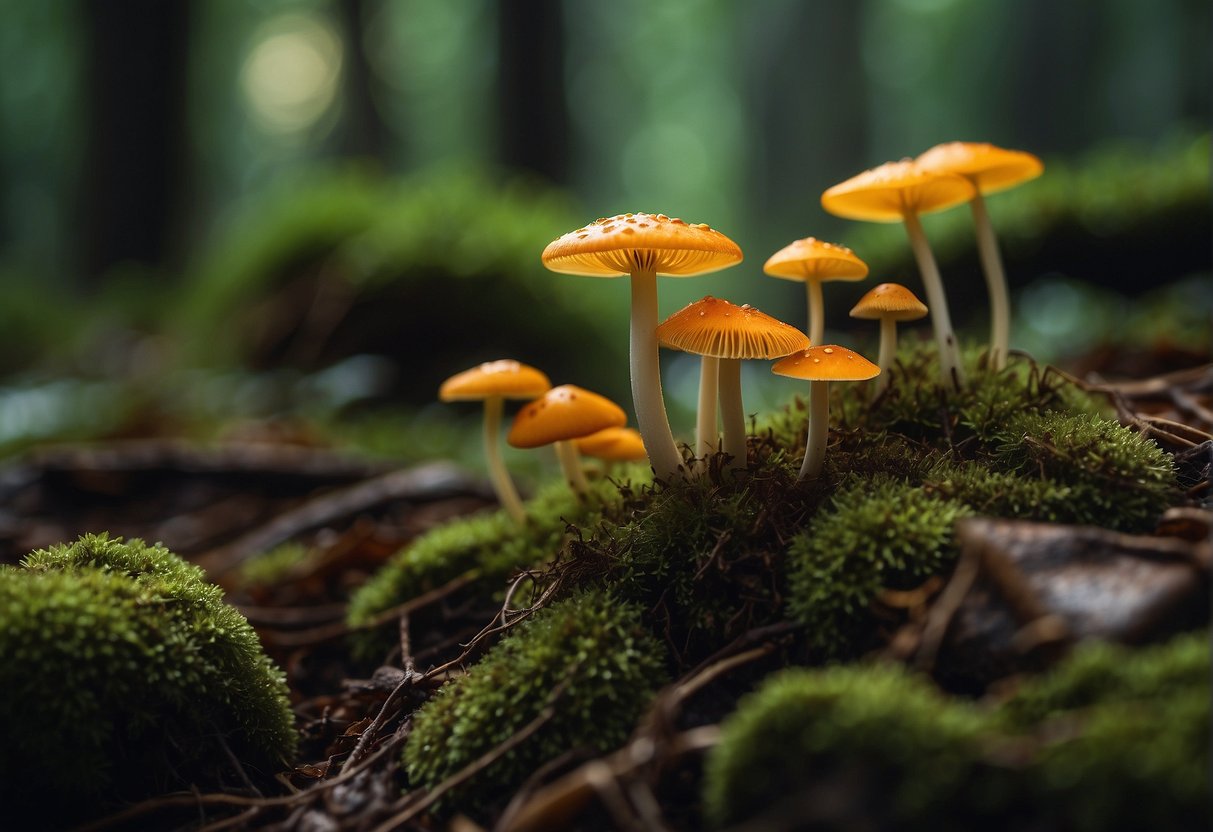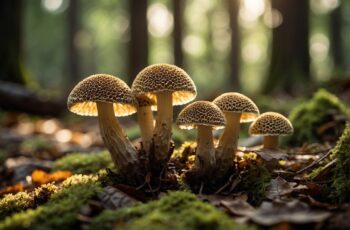Mushroom hunting is a rewarding outdoor activity that allows you to connect with nature while foraging for edible fungi. It involves searching woodland grounds, fields, and forests to find wild mushrooms that can be used for culinary dishes or simply to appreciate their beauty and diversity. Before you set out on your mushroom search, it’s essential to equip yourself with knowledge about mushroom varieties and their habitats to ensure a successful and safe foraging experience.

When you begin exploring the world of mushroom foraging, you embark on an adventure that requires a keen eye and an understanding of the environment. Identifying mushrooms in the wild is a skill developed over time, guided by an awareness of the subtle clues provided by the surroundings. From the damp, shaded areas where certain mushrooms flourish to the unique seasonal patterns they follow, knowledge is your greatest tool. With patience and practice, you’ll learn to distinguish between delectable edibles and their potentially dangerous look-alikes, making each foray a fruitful endeavor.
Key Takeaways
- Exploring mushroom hunting can deepen your connection with the outdoors while providing delicious rewards.
- Learning to correctly identify mushrooms is crucial for a safe and enjoyable foraging journey.
- Sustainable harvesting practices foster a responsible relationship with the ecosystem and ensure future bounty.
Getting Started with Mushroom Foraging
Embarking on the journey of mushroom foraging can be an exciting way to connect with nature and enjoy the bounty of the outdoors. Your success hinges on understanding where to look and recognizing the optimal conditions to find mushrooms.
Locating the Right Habitat
Identifying the right habitat is paramount in mushroom foraging. Mushrooms thrive in environments where moisture and organic matter are abundant. Begin your search in forests, particularly where deciduous trees drop their leaves, creating a nutrient-rich soil. Loamy soil is an ideal substrate for many mushrooms, due to its balance of sand, clay, and organic material. Consider exploring near streams and creeks as water sources help maintain the necessary moisture levels for mushroom growth. Remember that different species prefer varying elevations, so do your research on the specific mushrooms native to your area.
Understanding the Seasons and Climate
Each mushroom species has its own growing season, generally dictated by temperature and moisture. For example, morels emerge in the spring, signaling the onset of the foraging season. Many mushrooms favor the damp conditions of autumn, although some varieties can also be found during summer and even winter, depending on your climate. It’s important to understand the typical weather patterns and how they affect the environment – prolonged rain might boost mushroom growth, whereas drought could hinder it. Stay attuned to these elements to maximize your chances of a successful forage.
Identifying Mushrooms in the Wild
When foraging for mushrooms, your ability to distinguish between edible and poisonous varieties is critical. By mastering visual identification techniques and utilizing resources such as field guides and mobile apps, you can confidently explore the world of mycology.
Visual Identification Techniques
Start by closely examining the cap, stem, and gills or pores of the mushroom. The cap’s shape, color, and any surface texture provide vital clues. Beneath the cap, look for gills, which can vary in color and spacing, or if the mushroom has pores, note their size and arrangement. Always check the stem for any unique features like a ring, also known as an annulus, or a volva at the base, which can be indicative of certain species.
Taking a spore print is another indispensable step in your identification process. To do this, place the cap gill-side down on a piece of paper and wait for a few hours. The color of the spore print can help distinguish between species that are otherwise similar in appearance.
Remember, shape and color changes can occur due to the mushroom’s age or environmental factors, so it’s important to consider all characteristics and never solely rely on a single trait.
Utilizing Field Guides and Mobile Apps
Carry a field guide specific to the region you’re exploring. These guides provide detailed information on local species, including high-quality photographs and specific habitat notes. For example, learning that chanterelles grow in symbiosis with certain trees can lead you to the right environment for foraging.
Modern foragers can also make use of dedicated mushroom identification apps. These can offer real-time identification features and a vast database of mushroom species, like the extensive photo galleries in FungID, and even offline support for trips to remote areas. Apps provide a convenient cross-reference tool to confirm the findings from your visual inspection and field guide consultation.
While technology can assist, it is no replacement for knowledge and experience. Double-check your finds with multiple resources before considering any wild mushroom as edible. Enjoy your foraging, but always prioritize safety.
Popular Mushroom Species Across North America
North America is a fertile ground for mushroom hunters, presenting a variety of popular species ranging from the elusive morels to the generous flush of chanterelles. Below, you’ll discover some favorites and their defining traits that make them sought after by foragers like you.
Morels and Their Unique Characteristics
Morels (Morchella spp.) stand out with their distinctive honeycomb-like appearance. These prized mushrooms emerge in spring and are often found in woodland areas, particularly where there has been recent burn activity. Morels come in various species such as the common morel (Morchella esculenta) and the black morel (Morchella elata). Their textured caps and hollow bodies are not just unique in form but also in flavor, offering a rich, earthy taste when cooked.
- Edibility: Highly edible and sought-after for their taste.
- Identifying Tips: Look for the distinctive honeycomb cap; always ensure there is a hollow stem from cap to base to differentiate from toxic lookalikes.
Chanterelles, Oysters, and Other Edibles
Chanterelles (Cantharellus cibarius and related species) are renowned for their delicious flavor and can be identified by their vibrant golden-yellow color and trumpet-like shape. They tend to grow in mossy, older forests and are a delight sautéed with a bit of butter and garlic.
Oyster mushrooms (Pleurotus ostreatus) are another woodland inhabitant, often found on the sides of dead or dying trees. These mushrooms have a delicate flavor and texture, making them versatile for many dishes.
- Boletes: A group that includes the esteemed King Bolete (Boletus edulis), boletes are characterized by having a sponge-like layer of pores instead of gills beneath their caps.
- Hen of the Woods (Grifola frondosa): Not to be confused with chicken of the woods, this mushroom grows at the base of trees and has a rich, savory flavor.
- Chicken of the Woods (Laetiporus sulphureus): These mushrooms offer a meaty texture and are often bright orange, making them hard to miss.
Bold flavors and textures vary across these species. Each mushroom’s unique edibility and culinary value contribute to their popularity. When foraging, always consult a field guide or an expert to confirm the identity of your finds, as edible mushrooms can have toxic lookalikes. Happy foraging!
Best Practices for Sustainable Mushroom Harvesting

Adopting sustainable practices during mushroom picking ensures the preservation of natural habitats and allows for continued enjoyment of this rewarding activity. It’s crucial to use the proper equipment and respect the environment where these fungi thrive.
Equipment and Ethical Considerations
Your choice of equipment when harvesting mushrooms makes a significant difference in sustainable foraging. A basket or a mesh bag allows for spores to disperse as you walk, promoting future growth cycles. This is preferable to using a sealed container, which does not offer the same benefit to the ecosystem. Always carry a sturdy knife to cut mushrooms cleanly. Knowledge of local varieties is critical to avoid disturbing non-harvestable species, and understanding the lifecycle of mushrooms ensures that you forage without causing undue harm.
Through Responsible and Sustainable Mushroom Picking you can become familiar with ethical guidelines including correct identification and respecting limits to your harvest to keep the mushroom populations intact.
Preservation of Mycelium and the Environment
Preserving mycelium, the underlying fungal network critical for mushroom development, is vital for sustainability. When picking mushrooms, never rake or dig into the soil, as this can severely disrupt the mycelium. Instead, cut mushrooms at ground level or gently twist them off their stems to keep the mycelium undisturbed.
It’s important to practice no-trace foraging by being mindful of one’s impact on the surrounding environment. This includes staying on established paths where possible and being cautious not to trample plants or compact soil unnecessarily.
Learn about the importance of maintaining the health of the forest floor from resources like A Guide To Sustainable Mushroom Foraging, which emphasizes minimal impact techniques for harvesting mushrooms.
Legalities and Safety Guidance
When you set out on your mushroom foraging adventure, being informed about the relevant laws and understanding safe consumption practices are pivotal for a rewarding experience.
Regulations and Permissions
Before you begin searching for mushrooms, it’s crucial to know that foraging laws vary by state. In some places, like in parts of Alabama, specific species may be legally harvested, while others require you to have permissions in place. Always check your local regulations or obtain a foraging permit if required. This ensures your activities are legal and helps protect natural resources.
Health Risks and Safe Consumption
When consuming wild mushrooms, the stakes are high. Mistakenly ingesting a poisonous variety can have severe health consequences, including organ failure or death. To mitigate risks:
- Identify: Learn to accurately identify edible mushrooms and differentiate them from toxic look-alikes.
- Verify: Double-check with a local expert or utilize reliable resources for mushroom identification.
- Education: Familiarize yourself with common poisonous mushrooms and their health risks.
- Preparation: Understand the correct methods to clean, store, and prepare mushrooms to preserve their quality and your safety.
Happy foraging, and stay safe out there!
Connecting with Mushrooms Communities

Venturing into the realm of mycology can be as thrilling as any outdoor adventure. By connecting with mushroom communities, you tap into a wealth of knowledge and experience that can enhance your foraging and identification skills.
Local Mushroom Clubs and Associations
Joining a local mushroom club or association is a first-rate way to deepen your understanding of fungi. These clubs often organize regular foraging expeditions, where you can learn about mushroom habitat, safe picking practices, and the subtle art of identification. The North American Mycological Association (NAMA) supports local mycology groups across the continent, offering a hub for you to discover a community near you. Becoming a member usually involves a nominal subscription fee which contributes to educational resources and activities.
- Benefits of local clubs:
- Hands-on learning experiences in the field
- Building relationships with other mushroom enthusiasts
- Access to experts well-versed in local mushroom varieties
Online Resources and Continuing Education
The internet is a powerhouse for continuing your mushroom education. An excellent place to start is by tapping into online forums and social media groups dedicated to mycology. These platforms offer a mixture of novice insights and expert opinions, and you can seek advice anytime from the comfort of your own home.
Here are some key online resources to consider:
- Subscription-based learning platforms: For a more structured approach, sign up for courses that offer a progressive curriculum.
- Community-driven databases: Engage with, and contribute to, user-generated content that documents various mushroom types and their occurrences.
By leveraging both local associations and online resources, you’ll steadily build upon your knowledge and likely find yourself part of a passionate community of like-minded foragers and naturalists.


